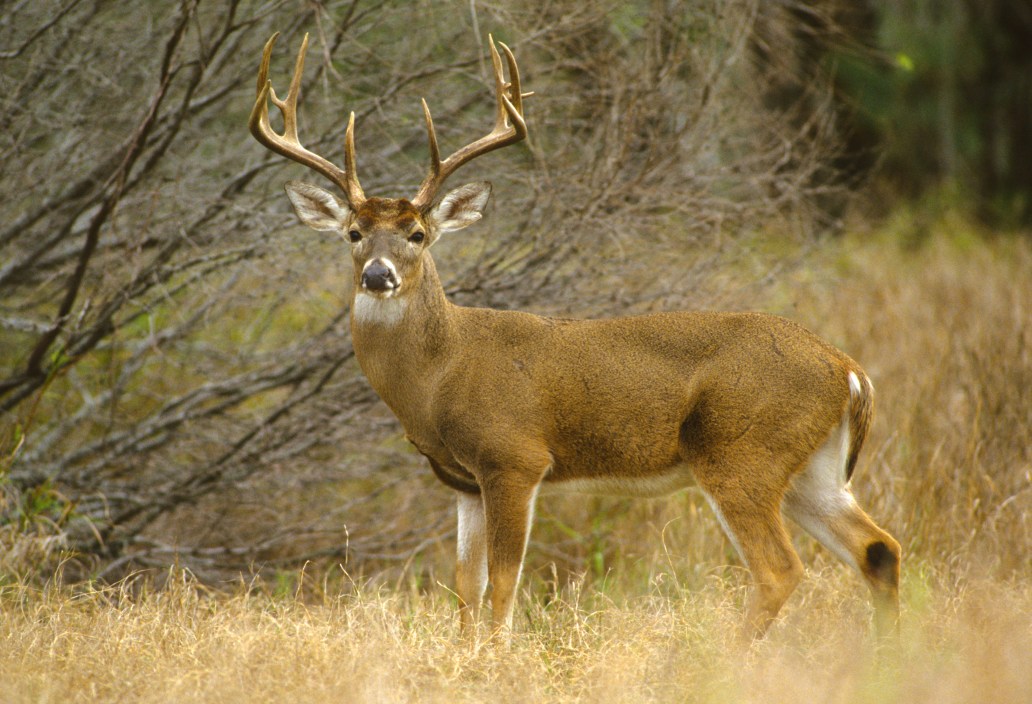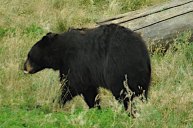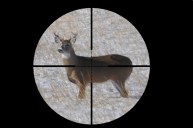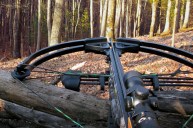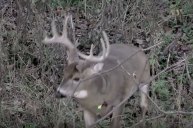All hunters should know where to aim when shooting a deer. The best shot brings the deer down immediately, minimizing suffering and making it quicker and easier to find. It takes more than simply aiming for the deer's vitals. There's so much to consider, including deer anatomy, shot angle and shot placement. Is the deer quartering towards you or quartering away? Can you feasibly get a good shot that won't result in a wounded deer?
Those who have been deer hunting for a long time should have a solid grasp on where to aim, but it never hurts to review. Plus, every year new deer hunters join the ranks. So, let's dig in on where to aim at a deer while hunting.
The Deer Vital Area
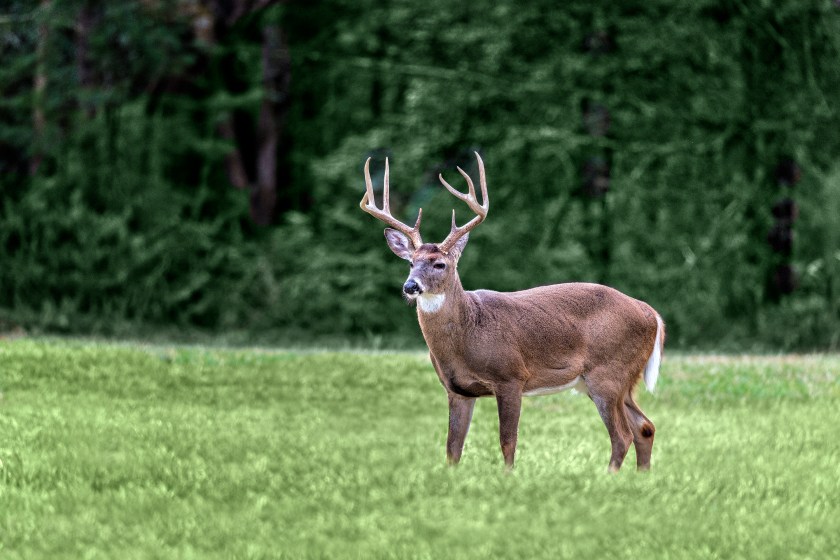
Getty, WendellandCarolyn
A deer's vital area consists of the location where the lungs and heart are located. The heart and lungs are vital organs, hence the term. Of the broader vitals area, the lungs area is specifically where deer hunters should aim. If the lungs and heart are damaged significantly, blood loss or suffocation occurs, and death quickly follows. When viewing the deer from the side, which is called broadside in hunting terminology, the vital area sits behind the two front shoulders, about mid-body on the vertical plane. The lungs area extends about a third of the way back. They cover the area behind the shoulder down to the bottom chest area of the deer. The heart rests in the lower half of and between the lungs. Aiming for this heart and lung area gives you the best odds of a quick, humane kill while also having a bit of wiggle room in case of error. These vital organs comprise a group roughly the size of a slightly deflated basketball inside the chest cavity. But your aiming point shouldn't be the entire chest cavity. Follow the time-tested mantra "Aim small, miss small." Pick a tiny patch of hair or some other identifying feature as small as possible upon which to set your crosshairs or bow sight. The difference between a kill shot and a wounded animal can be a matter of inches.
Broadside Shots on Deer
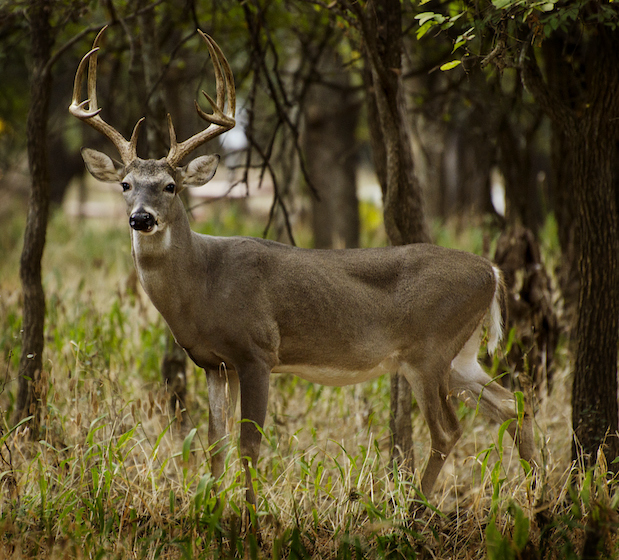
Getty, Medley of Photography
Broadside shots are the most preferred because it gives the highest probability of hitting the vitals, especially the lung area. Not only that, if attempting to hit both the heart and lungs, the broadside shot presents the surest scenario for your bullet or arrow to strike both organs, which usually puts the deer down quickly.
A broadside shot is considered the best option because it gives you the best chance for a double lung and heart shot and a total pass-through (meaning your bullet or arrow exits on the opposite side of the animal).
You have more aiming options when using a gun. Many bowhunters will wait until the deer is not only broadside but takes a step forward to put the arrow in the best spot, unchallenged by shoulder and leg bone. This is important; if you have the chance, wait for a step forward with the front leg closest to you, and you'll increase your chances of missing the bone.
Ideally, you want your projectile to strike both lungs and the top of the heart. Remember to adjust your mental image of the vitals area to the size of the deer you're looking at. A small doe or spike buck will have smaller vitals, but that size can be significantly smaller—like twice as small—as those organs on a large buck.
Aiming at that tiny spot where lungs and heart meet is forgiving if your shot is off by a couple of inches or more. If you miss the heart, you will likely still achieve a double lung shot, quickly killing the deer. Miss the heart shot by a few inches rearward, and you may clip the liver, which lies behind and above the heart. Chances are that if you hit the liver, you will also hit the lung, as the lungs partially cover the liver. A lung and liver shot is also a killing shot.
An old trick to help you mentally compute your aiming spot is visually dividing the deer's body into three equal horizontal segments. Visualize the top of the bottom horizontal segment (the top of the lower third). Place your bow sight or crosshairs on that line and move 3 or 4 inches back from the deer's shoulder crease. Remember, aim small, miss small. Pick a tiny target area to aim at. This method should place you squarely in the vitals and enable you to strike both lungs and heart.
There are other shots that can drop a deer but are much riskier, such as headshots and spine shots. Missing a headshot by a couple of inches can seriously wound, but not kill, a deer. Suppose you miss and hit the jaw or other area in the head. In that case, the animal may escape, only to die an agonizing death from starvation or longevity of the wound.
You need to know a few things about deer anatomy to make a good shot from different angles. You also need to know the capabilities of your chosen weapon. The shot you make with your .308 Winchester may not be advisable for your 50-pound longbow. A deer's shoulder blade provides little resistance to a rifle bullet, but that same bone could stop an arrow from reaching the vitals. You must be aware of the animal's front leg and shoulder when aiming for the vitals. The position of the leg dictates the position of the shoulder blade. The shoulder blade in a deer is not necessarily considered heavy bone. Still, it could be heavy enough to impede an arrow from traditional archery equipment.
Pass-Through Shots on Deer
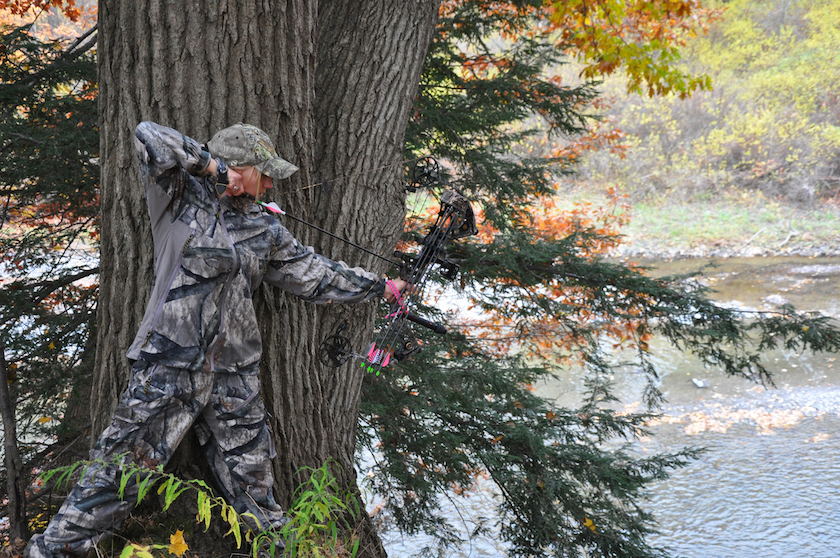
Getty, DLCcreates
If possible, you also want your bullet or arrow to pass through the animal. This is why shoulder shots are less than ideal. There are shoulder bones, such as the scapula, that could get in the way of a clean shot. This could prevent contact with the deer's vitals, thus resulting in a wounded deer, which is much worse than a dead deer. Shooting through the rib cage rather than a shoulder is a better bet for a clean pass-through for both rifle and bow. While a rifle may possibly pass through the shoulder, a broadhead probably will not.
You ideally want a pass-through because there is a better chance of having a healthy blood trail should the shot not drop the deer in its tracks. An entry hole and an exit wound are two places for blood to exit the body, making your tracking job much more manageable.
Quartering Away Shots
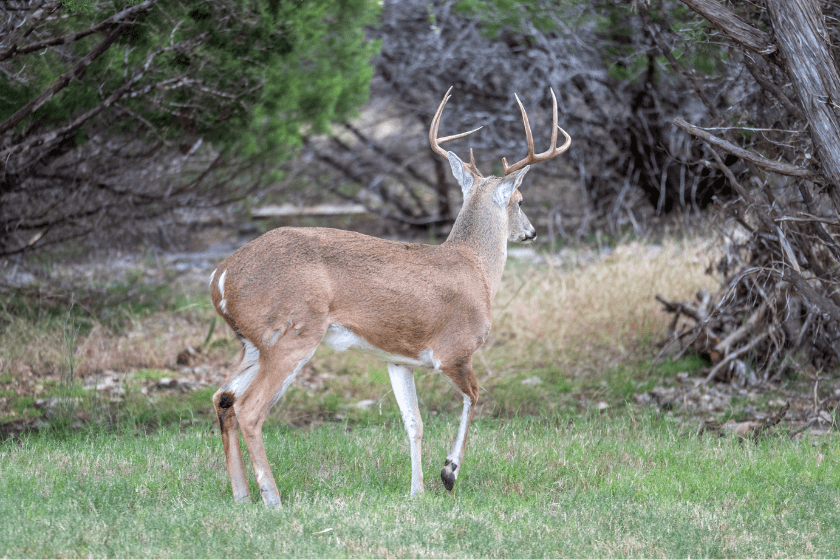
Getty, PorqueNoStudios
Quartering away is when a deer is turning away from you. A broadside deer gives you the most consistent view of the vital area, but a quartering-away shot may be preferable. This is only if the deer is not quartering away too sharply, meaning the whitetail deer is more broadside than quartered away. A slight quartering away position opens things up a bit, moves the shoulder blade out of the way, and could enable you to hit the liver, lungs, and heart.
Imagine that you are on a clock face when looking at your deer. You're at the six o'clock position, and the deer is standing broadside with its nose at three o'clock and its tail at the nine o'clock position. That would be ideal if the deer quarters away no more than the two or ten o'clock position. That quartering-away shot makes for a better angle to strike the vitals. At steeper angles, you start to have the cons outweigh the pros, in my opinion.
READ MORE: The Ultimate Beginner Bowhunting Guide for Women
